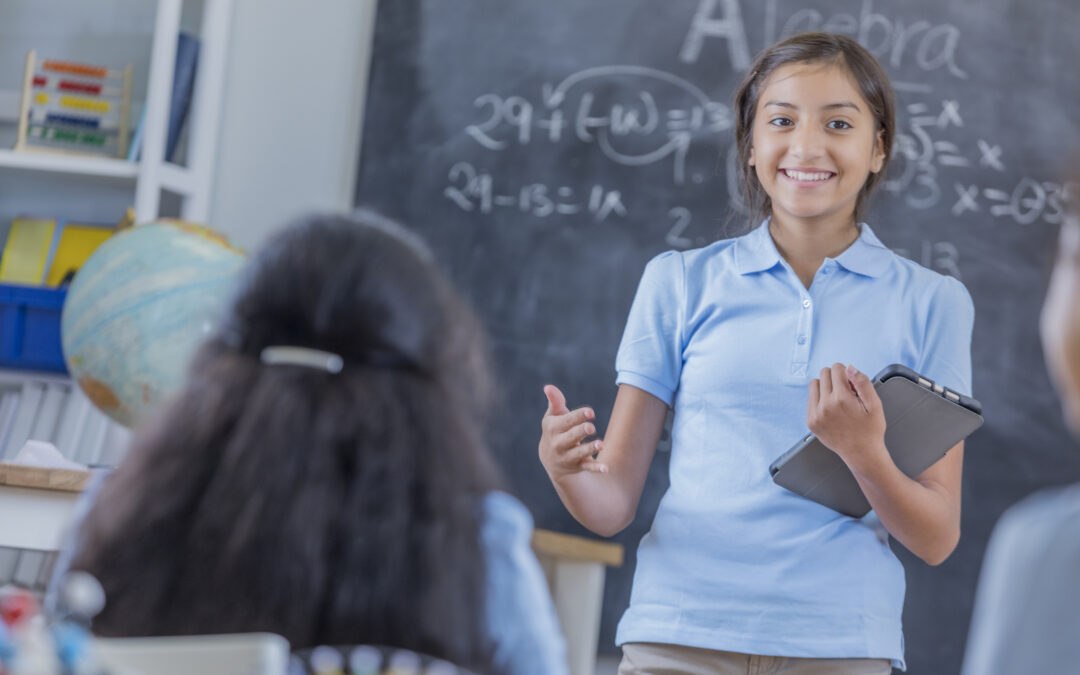Future readiness in education refers to the intentional preparation of students for the dynamic and evolving challenges of the future. It takes a holistic position, going beyond traditional academic skills, to emphasize the development of critical thinking, adaptability and interpersonal skills, as well as the skills to be happy and productive in life.
Future-ready education acknowledges the rapid pace of change in the world, including advancements in technology, shifts in the job market and global challenges. It seeks to equip students with the knowledge, skills and – importantly – the mindset needed to successfully navigate an unpredictable future. Future readiness prepares students to embrace innovation, solve complex problems and contribute positively to society, ensuring they are well-equipped to thrive in a world characterized by continuous change and uncertainty.
Future Readiness in Digital Citizenship
A Comparative Study of the Purposes of Education in the Twenty-First Century, states that future readiness enables students to meet 21st century expectations and demands “to live long and healthy lives, to contribute positively as active members of their communities, to participate economically and politically in institutions that are often local as well as global, and to relate to the environment in ways that are sustainable.”
In other words, future readiness cultivates citizenship, which is increasingly digital. The average American spends 7 hours and 4 minutes on screen per day and 95 percent of students have access to a smartphone with 97% of teens saying they use their phone during the school day.
Understanding the Digital Footprint
To get to the core of digital citizenship, it’s important to understand the concept of a digital footprint. Digital footprints are records of someone’s online interactions, buying habits, actions on a website and even location when accessing content. Digital footprints manifest when people use social media, interact with ads, checkout on a website or fill out a form – to name just a few scenarios. In most cases, digital footprints are not used maliciously, but if they fall into the wrong hands, they can be.
Online Privacy and Security
Think of the Cambridge Analytica scandal. By downloading an application through Facebook, people unwittingly agreed to allow Cambridge Analytica access to their social information as well as that of all their friends with public profiles. The information gathered was then used to target people’s political beliefs. This sort of surreptitious use can also occur when people click on suspicious links, give out payment card information to unsecure websites, or don’t read the terms of service when they download something.
This is not an isolated incident. Data theft is a significant issue. And while many assume older adults are more susceptible to digital threats, this isn’t the case. According to a report by the FTC, data theft, including online shopping fraud, bogus cryptocurrency investments, job scams and more, affect digital users of all ages.
Information Literacy
Also related to the Cambridge Analytica scandal, fake news is another troublesome trend. In a report published by Statista in 2023, nearly 40 percent of respondents admitted to accidentally sharing fake news, with 67% of Americans believing fake news causes a great deal of confusion.
The importance of information literacy extends beyond this, too. For example, people use social media to influence purchases: 40 percent of users research buying decisions with social media. And this number doesn’t even touch the number of ads people are susceptible to from influencers and brands.
Internet Safety
With the proliferation of these tools, there are also deeply concerning trends around cyberbullying. In an article published by DoSomething.org, statistics were shared that about 37% of young people between the ages of 12 and 17 have been bullied online, with 60% of young people having witnessed online bullying.
Education about these risks and considerations matters, with 95 percent of teens having access to a smartphone and nearly half being online constantly. Data also shows that 51% of U.S. teenagers spend at least four hours per day using social media.
Moreover, as students broaden how they use digital tools in their personal lives, it is imperative that we help them develop strategies to protect themselves while also enabling them to enhance their online experience.
Future Readiness and Digital Citizenship
Digital citizenship helps students to understand their online rights and responsibilities and how to securely use online tools as citizens of our digital world. By developing digital citizenship skills, students learn how to manage the inherent risks of the internet and can instead build a positive and productive experience for themselves. To do so, digital citizenship can address this broad range of concepts:
- Online Privacy and Security: Students develop strategies for keeping their online information secure. This includes building understanding of phishing, password best practices, viruses and website security.
- Digital Identity and Footprint: Students manage their online presence by understanding their rights and responsibilities and build safe and positive online communities.
- Information Literacy and Creative Copyright: Students practice online research techniques for using search engines effectively, identifying credible websites and citing online sources.
- Internet Safety: Students learn to practice strategies to stay safe online like identifying inappropriate content and unsafe connections. They also learn to identify, manage and report cyberbullying.
Together, students learn how to manage their digital footprint and mitigate risk online by understanding safety fundamentals and developing online security strategies. They productively use the internet with information literacy – and digital literacy more generally. And by doing so, they can help protect those in their network, too.
Future readiness for 21st century citizenship is what will define students’ experiences now and as adults. It is a transferable skill that will stick with them despite rapidly advancing technology, shifting social media platforms and new privacy risks.
Learn more about digital citizenship in our article “What is Digital Citizenship & What Does It Include?”
This article was originally published in August 2020 and has been updated for accuracy, relevance, sources, and information.

Learning.com Team
Staff Writers
Founded in 1999, Learning.com provides educators with solutions to prepare their students with critical digital skills. Our web-based curriculum for grades K-12 engages students as they learn keyboarding, online safety, applied productivity tools, computational thinking, coding and more.
Further Reading
Understanding Proclamation 2024 and the TA-TEKS
Understanding Proclamation 2024 and the TA-TEKS In 2024, Texas introduced Proclamation 2024 to begin the process of adopting new instructional...
Guide to Teaching Algorithms in Computer Programming for K-12 Students
Algorithms are the heart of computer programming, providing the step-by-step instructions that computers follow to perform tasks and solve problems....
Planning Digital Literacy Assessment: A Simplified Approach
As educators know, assessments are critical to the learning process. They provide beneficial self-checks to students, informative results to...




